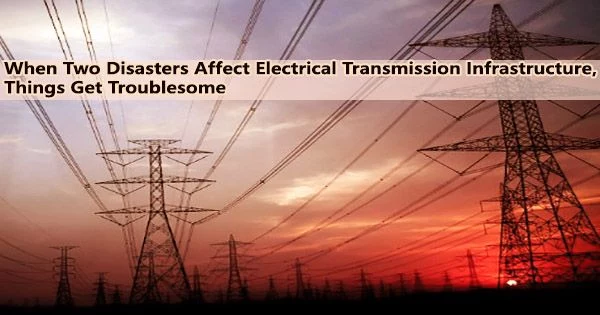Electrical transmission infrastructure actually refers to the physical infrastructure used to transport high-voltage electrical power over long distances from power plants to local distribution networks, where it can be delivered to homes, businesses, and other users.
One natural disaster can knock out electric service to millions. A recent study implies that consecutive disasters might result in catastrophic damage, but the study also recommends new techniques for monitoring and maintaining electricity grids.
A machine learning model was created by researchers at The Ohio State University to forecast the likelihood that overhead transmission lines may sustain damage from a series of natural disasters, such as hurricanes or earthquakes.
Steel transmission towers are a crucial component of contemporary infrastructure because they hold overhead power lines high off the ground, allowing electricity to be transmitted over vast distances. After significant damage, these systems’ failures can impair networks in impacted communities and take weeks or months to repair.
The study, published in the journal Earthquake Engineering and Structural Dynamics, uses simulations to analyze what effect prior damage has on the performance of these towers once a second hazard strikes.
Their findings suggest that previous damage has a considerable impact on the fragility and reliability of these networks if it can’t be repaired before the second hazard hits, said Abdollah Shafieezadeh, co-author of the study and an associate professor of civil, environmental, and geodetic engineering.
When large-scale power grid systems are spread over large geographic areas, it’s not possible to carefully inspect every inch of them very carefully. Predictive models can help engineers or organizations see which towers have the greatest probability of failure and quickly move to improve those issues in the field.
Abdollah Shafieezadeh
“Our work aims to answer if it’s possible to design and manage systems in a way that not only minimizes their initial damage but enables them to recover faster,” said Shafieezadeh.
The machine learning algorithm discovered that the order of the disasters may matter in addition to the fact that an earthquake and hurricane together might be extremely catastrophic to the electrical grid.
The researchers discovered that the likelihood of a tower collapsing is substantially higher in the case of an earthquake followed by a hurricane than it is in the case of an earthquake followed by a hurricane.
That means that while populations would undoubtedly experience some negative effects if a storm preceded an earthquake, an earthquake preceded a hurricane could completely destroy a region’s power grid. Such conclusions are why Shafieezadeh’s research has large implications for disaster recovery efforts.
“When large-scale power grid systems are spread over large geographic areas, it’s not possible to carefully inspect every inch of them very carefully,” said Shafieezadeh. “Predictive models can help engineers or organizations see which towers have the greatest probability of failure and quickly move to improve those issues in the field.”
The researchers developed “fragility models” to examine how the structures would hold up under various types and intensities of natural hazards after training the model for several scenarios.
These simulations helped researchers come to the conclusion that the pattern of tower failures caused by single-hazard events was very different from the pattern of failures produced by multi-hazard events. According to the investigation, several of these flaws were found in the tower’s leg parts, a section that helps fasten the tower to the ground and prevents collapse.
Overall, Shafieezadeh said his research shows a need to focus on re-evaluating the entire design philosophy of these networks. Yet to accomplish such a task, much more support from utilities and government agencies is needed.
“Our work would be greatly beneficial in creating new infrastructure regulations in the field,” Shafieezadeh said. “This along with our other research shows that we can substantially improve the entire system’s performance with the same amount of resources that we spend today, just by optimizing their allocation.”
The Korea Institute of Energy Technology Evaluation and Planning (KETEP) and the Ministry of Trade, Industry & Energy of the Republic of Korea (MOTIE) supported this work.





